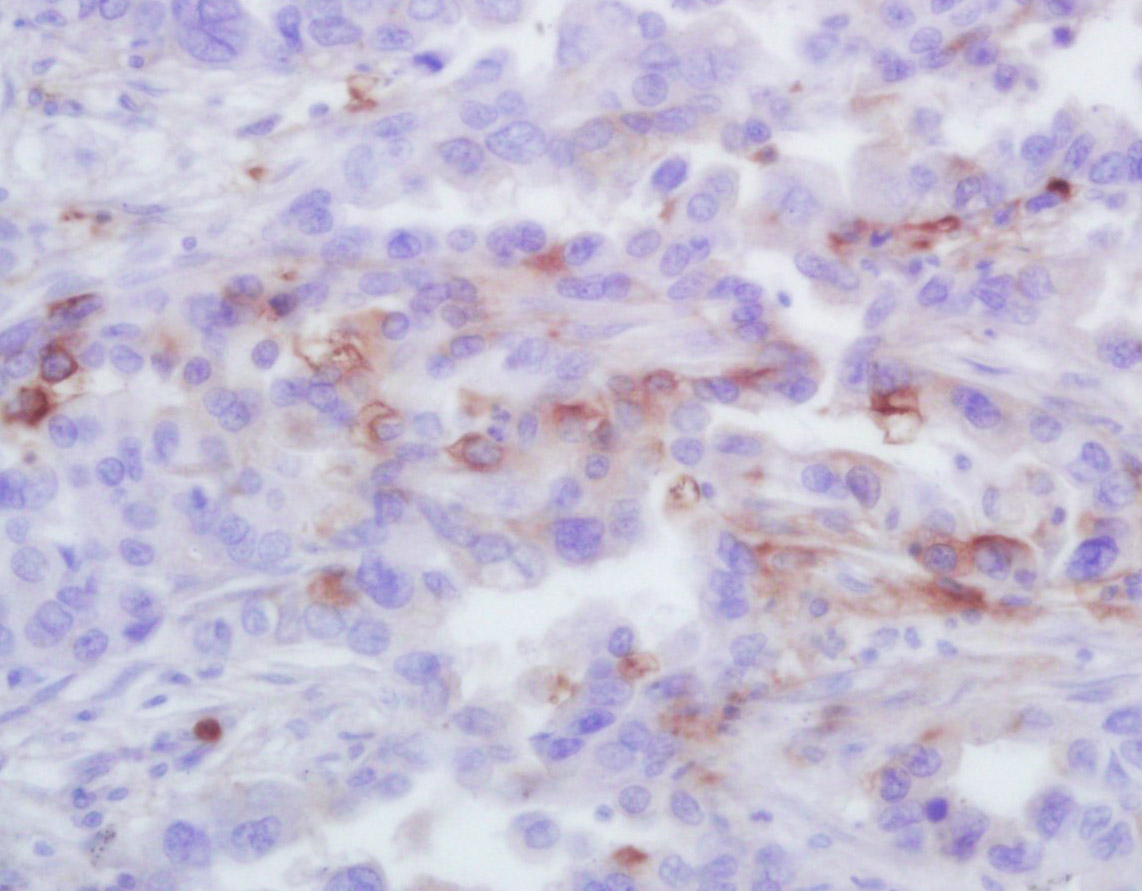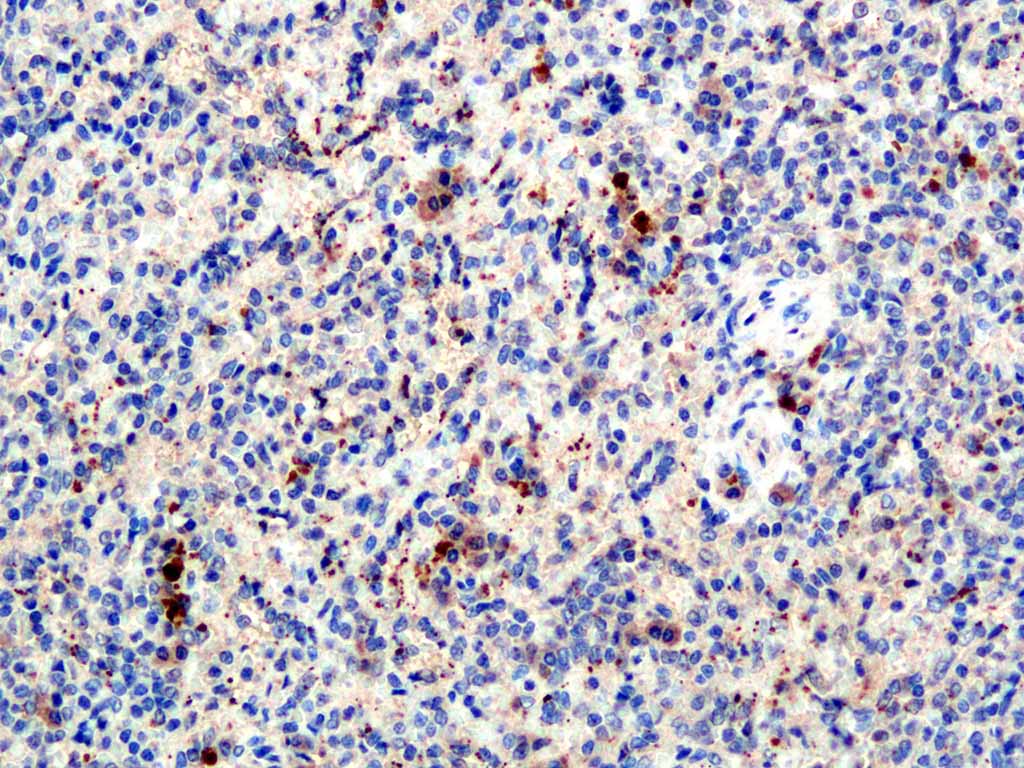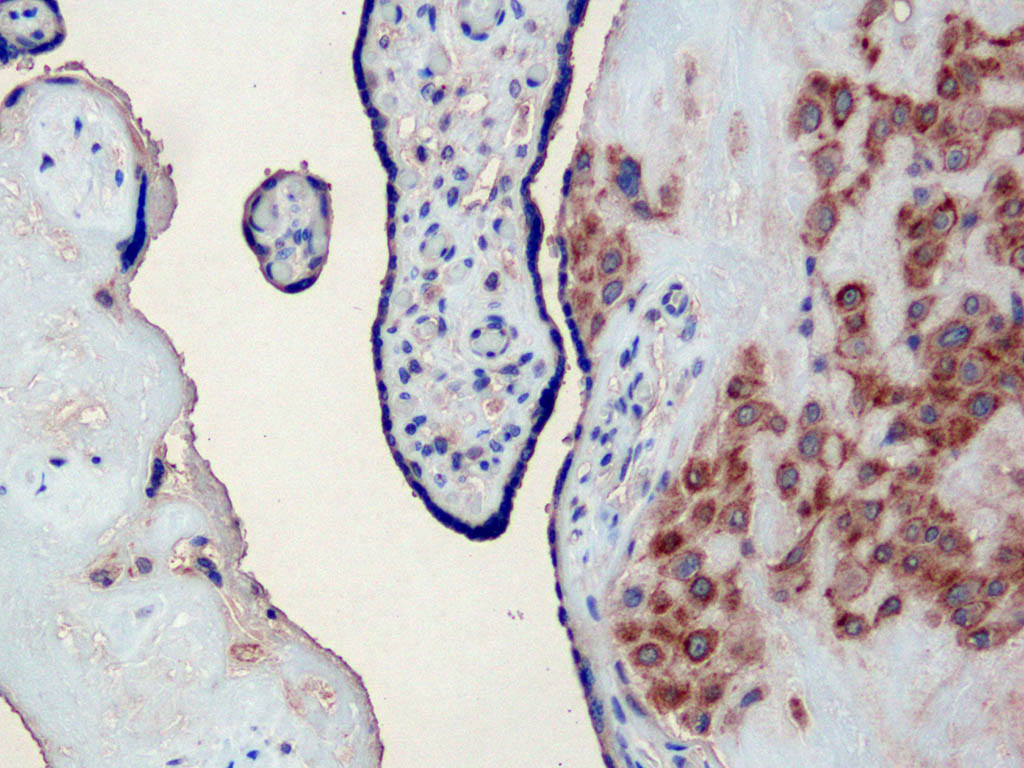
Rabbit Anti-GRO Alpha antibody
CINC1; GRO-1; CXCL1; C-X-C motif chemokine 1; CALC 1; CALCA; Calcitonin related polypeptide alpha; Catacalcin; CGRP I; CGRP1; CGRPI; Chemokine (C-X-C motif) ligand 1 (melanoma growth stimulating activity, alpha); chemokine (C-X-C motif) ligand 1; Chemokin
View History [Clear]
Details
Product Name GRO Alpha Chinese Name 黑色素瘤生长刺激活性蛋白α/GROa抗体 Alias CINC1; GRO-1; CXCL1; C-X-C motif chemokine 1; CALC 1; CALCA; Calcitonin related polypeptide alpha; Catacalcin; CGRP I; CGRP1; CGRPI; Chemokine (C-X-C motif) ligand 1 (melanoma growth stimulating activity, alpha); chemokine (C-X-C motif) ligand 1; Chemokine (C-X-C motif) ligand 2; CINC-1; Cxcl1; CXCL2; Cytokine-induced neutrophil chemoattractant 1; Fibroblast secretory protein; Fsp; Gro 1; Gro A; Gro; GRO protein, alpha; Gro1; GRO1 oncogene (melanoma growth stimulating activity, alpha); GRO1 oncogene (melanoma growth-stimulating activity); Gro1 oncogene; GROa; GROA_HUMAN; Growth regulated protein GRO; Growth regulated protein GRO; Growth-regulated alpha protein; Katacalcin; KC; KC chemokine, mouse, homolog of; melanoma growth stimulatory activity alpha; Melanoma growth stimulatory activity; Melanoma growth stimulatory activity, alpha; MGC126648; MGSA alpha; MGSA; MGSA-a; N51; NAP-3; NAP3; Neutrophil-activating protein 3; Platelet-derived growth factor-inducible protein KC; Platelet-derived growth factor-inducible protein KC; Scyb 1; Scyb1; Secretory protein N51; Secretory protein N51; Small inducible cytokine subfamily B, member 1. GROα; GRO α; GRO-α; literatures Research Area Tumour Cell biology immunology Growth factors and hormones transcriptional regulatory factor Immunogen Species Rabbit Clonality Polyclonal React Species Human, (predicted: Mouse, Rat, ) Applications ELISA=1:5000-10000 IHC-P=1:100-500 IHC-F=1:100-500 IF=1:100-500 (Paraffin sections need antigen repair)
not yet tested in other applications.
optimal dilutions/concentrations should be determined by the end user.Theoretical molecular weight 7.8kDa Cellular localization Secretory protein Form Liquid Concentration 1mg/ml immunogen KLH conjugated synthetic peptide derived from mouse GRO Alpha: 51-107/107 Lsotype IgG Purification affinity purified by Protein A Buffer Solution 0.01M TBS(pH7.4) with 1% BSA, 0.03% Proclin300 and 50% Glycerol. Storage Shipped at 4℃. Store at -20 °C for one year. Avoid repeated freeze/thaw cycles. Attention This product as supplied is intended for research use only, not for use in human, therapeutic or diagnostic applications. PubMed PubMed Product Detail The GRO gene was originally identified by subtractive hybridization studies between normal and tumorigenic Chinese hamster embryo fibroblasts. The hamster cDNA was cloned and used as a probe for cloning of the human GRO cDNA. The GROalpha gene initially cloned from T24 cells and the gene in melanoma cells encoding melanoma growth stimulating protein (MGSA) are identical. Human cells contain three closely related, but distinct GRO genes: GRO alpha, GRO beta, and GRO gamma. GRO beta and GRO gamma share 93% and 82% identity, respectively, with GRO alpha at the nucleotide level. GROs are members of the chemokine alpha family that is characterized by the separation with one amino acid of the first two cysteine residues, C-X-C, in the amino acid sequence. The GRO gene has been mapped to chromosome 4q21. In normal cells, human mRNA GRO expression is found in foreskin fibroblasts, synovial fibroblasts, chondrocytes and osteocytes. Additionally, GRO mRNA has been detected in mammary fibroblasts, mammary epithelial cells, endothelial cells, activated monocytes, macrophages, and neutrophils. Characterization of the GROalpha receptor indicates the presence of low and high affinity receptors on human neutrophils.
Function:
Has chemotactic activity for neutrophils. May play a role in inflammation and exerts its effects on endothelial cells in an autocrine fashion. In vitro, the processed forms GRO-alpha(4-73), GRO-alpha(5-73) and GRO-alpha(6-73) show a 30-fold higher chemotactic activity.
Subcellular Location:
Secreted.
Post-translational modifications:
N-terminal processed forms GRO-alpha(4-73), GRO-alpha(5-73) and GRO-alpha(6-73) are produced by proteolytic cleavage after secretion from peripheral blood monocytes.
Similarity:
Belongs to the intercrine alpha (chemokine CxC) family.
SWISS:
P12850
Gene ID:
14825
Database links:Entrez Gene: 2919 Human
Entrez Gene: 14825 Mouse
Omim: 155730 Human
SwissProt: P09341 Human
SwissProt: P12850 Mouse
Unigene: 708652 Human
Unigene: 789 Human
Product Picture
Antigen retrieval: citrate buffer ( 0.01M, pH 6.0 ), Boiling bathing for 15min; Block endogenous peroxidase by 3% Hydrogen peroxide for 30min; Blocking buffer (normal goat serum,C-0005) at 37℃ for 20 min;
Incubation: Anti-GRO Alpha Polyclonal Antibody, Unconjugated(SL10234R) 1:200, overnight at 4°C, followed by conjugation to the secondary antibody(SP-0023) and DAB(C-0010) staining
Paraformaldehyde-fixed, paraffin embedded (human spleen); Antigen retrieval by boiling in sodium citrate buffer (pH6.0) for 15min; Block endogenous peroxidase by 3% hydrogen peroxide for 20 minutes; Blocking buffer (normal goat serum) at 37°C for 30min; Antibody incubation with (GRO Alpha ) Polyclonal Antibody, Unconjugated (SL10234R) at 1:400 overnight at 4°C, followed by operating according to SP Kit(Rabbit) (sp-0023) instructionsand DAB staining.Paraformaldehyde-fixed, paraffin embedded (human placenta); Antigen retrieval by boiling in sodium citrate buffer (pH6.0) for 15min; Block endogenous peroxidase by 3% hydrogen peroxide for 20 minutes; Blocking buffer (normal goat serum) at 37°C for 30min; Antibody incubation with (GRO Alpha ) Polyclonal Antibody, Unconjugated (SL10234R) at 1:400 overnight at 4°C, followed by operating according to SP Kit(Rabbit) (sp-0023) instructionsand DAB staining.
Bought notes(bought amounts latest0)
No one bought this product
User Comment(Total0User Comment Num)
- No comment





 +86 571 56623320
+86 571 56623320
 +86 18668110335
+86 18668110335

